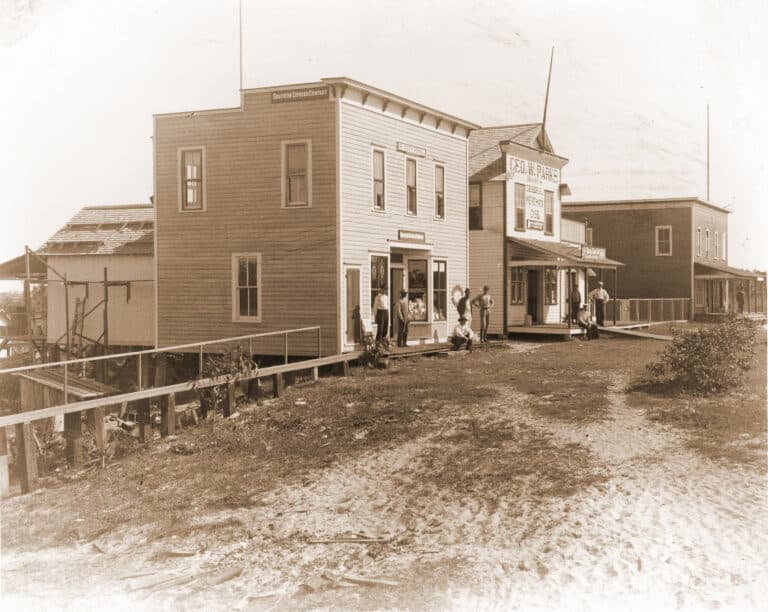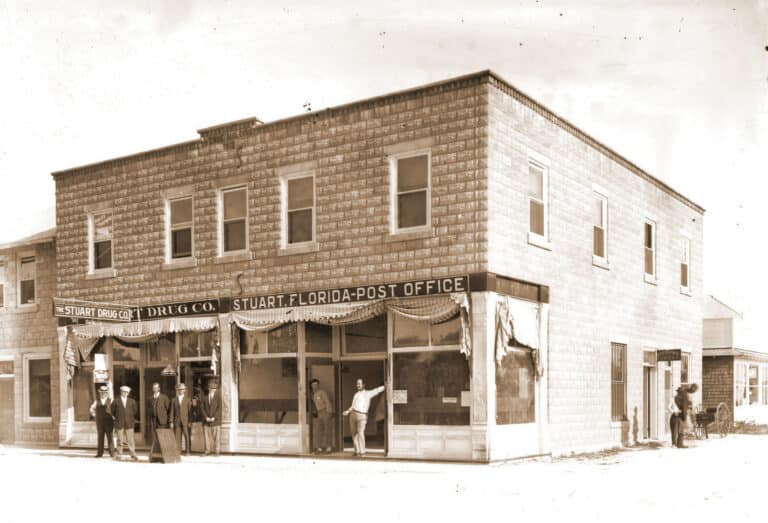Sandra Henderson Thurlow works with the Historical Society of Martin County and Stuart Heritage, Inc. to preserve and share local history. Her photo-filled books, available at the Stuart Heritage Museum and Elliott Museum as well as bookstores, are a must for anyone who has an interest in the history of Martin County.

This brief history below is a summarization of information from one of many of Sandra’s books.
The Atlantic Ocean, the Indian River, the North and South Forks of the St. Lucie River, and countless creeks played major roles in the history of Martin County. Inhabitants depended on the bounty of the water, as did the pioneers who settled here in the late 1800s.
The Gulf Steam is a shipping lane just off our coast. In 1876, before the region was settled, the U. S. Government built Gilbert’s Bar House of Refuge on Hutchinson Island. A keeper and his family offered assistance to victims of shipwrecks.
In the 1880s, Homer Hine Stuart, Jr. purchased property and built a bungalow on the north side of the St. Lucie River. He donated land for a depot and in return his surname name was given to the railway stop after Henry Flagler brought his railway down the Florida east coast to Palm Beach. There was no vehicular bridge across the St. Lucie River at that time.
When general store owner Walter Kitching convinced Flagler officials to move the depot to a site in front of his store, the name Stuart came to the south side of the river with the depot.
With the arrival of the Florida East Coast Railway, pioneer life changed dramatically. Reliable transportation made it much easier to ship fish and pineapples, the region’s major products. The tourist industry blossomed and social life revolved around the arrival of trains that now brought the mail.


Former President Grover Cleveland discovered the region’s good fishing and stayed at the Danforth Hotel. The news of Stuart’s fabulous fishing spread and other hotels, boarding houses and apartment houses were built to accommodate tourists. Boat building and commercial fishing changed to meet the needs of tourists and sports fishermen.
The completion of the Dixie Highway that would cross the St. Lucie River at Stuart helped create the Great Florida Land Boom of the 1920s. The St. Lucie River Region was caught up in the development frenzy. The Commercial Club campaigned for the creation of a new county and key members went to Tallahassee to plead the cause. Things fell into place after the decision was made to name the new county after the incumbent governor, John W. Martin

The former Commercial Club evolved into the Martin County Chamber of Commerce and was officially incorporated in 1928. There were many challenges. During the Great Depression of the 1930s, the Federal Government aided construction of the Roosevelt Bridge, the Woman’s Club and Library, the Log Cabin (used by the entire community), and the Art Deco addition to the courthouse (1937).
